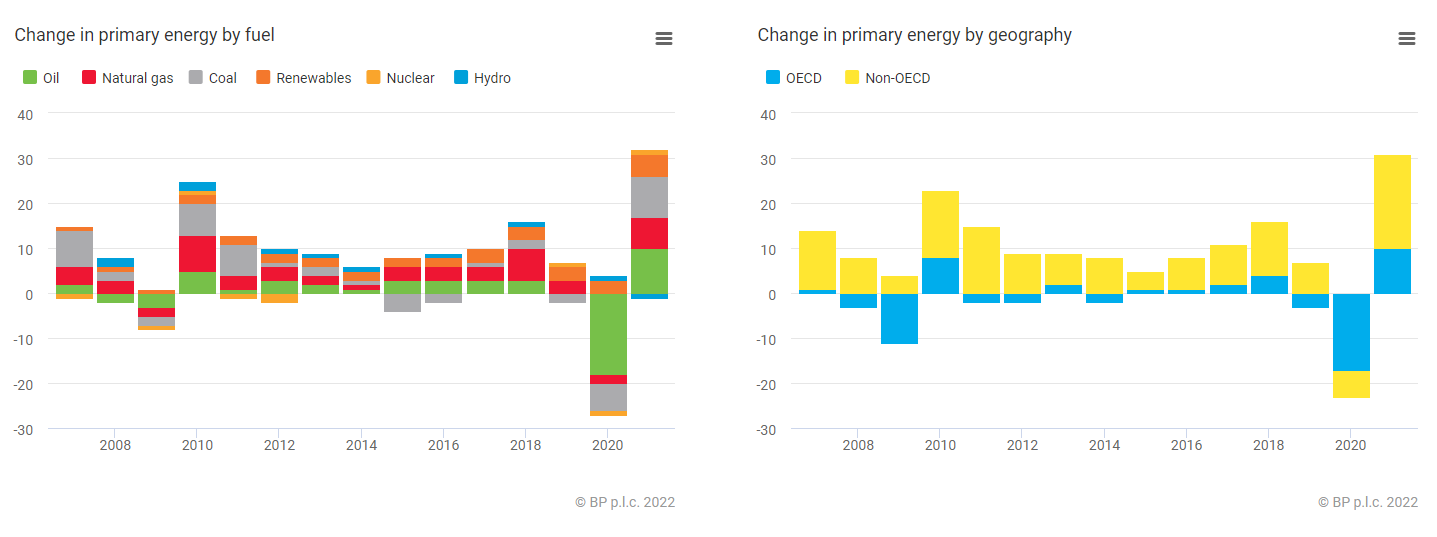
It’s been all but accepted now that our nation’s energy mix will evolve from relying completely on traditional sources of fuel to incorporating more renewables and cleaner energy sources. What’s little known, and maybe even surprising, is that we can accelerate that shift to a lower-carbon future by pairing solar and wind with natural gas and even oil. This immediate solution helps states not only achieve parity but meet net-zero goals quicker.
It’s already well underway with much of the activity focusing on using solar energy to run natural gas compressors for utilities, which work like engines or boosters, pushing natural gas to where it must go to heat homes and businesses.
- Last October in New Jersey, Enbridge began integrating solar power with Texas Eastern Transmission’s natural gas pipeline operations. Solar energy powers the compressor station behind the meter, enabling the pipeline to supply natural gas to homes and businesses.
- The same company also began a similar project in November 2020 in Tyrone Township, Pennsylvania to help power the compressor units that keep gas flowing along its cross-continent Texas Eastern Transmission pipeline.
- In New Mexico, natural gas operator EOG Resources has been using solar arrays since November 2020 to operate compressors throughout the southern part of the state that normally would rely on natural gas.
- Williams Companies, another large pipeline operator, is planning several utility-scale solar projects to power its natural gas transmission and processing operations.
- Occidental Petroleum has a 16-megawatt solar farm in the Permian Basin that is the first such solar project to power oil and gas operations directly in Texas.
Solar-powered air compressors are also being used by energy producers to drill for oil and natural gas in remote locations.
The objective, of course, is to reduce Greenhouse Gas emissions (GHGs) – the primary emissions that contribute to climate change. The two solar facilities operated by Enbridge are estimated to reduce such pollution by nearly 131,700 metric tons over their 25-year lives. That’s equal to taking over nearly 28,500 cars off the road. EOG Resources estimates its New Mexico facility will cut carbon dioxide emissions by 5,000 metric tons annually. On our way to net-zero and other low-carbon objectives, these pairings are significant.
For utilities, the natural gas and solar mix offer a persuasive example of how different energy sources can work together to ensure electric customers across the country have access to affordable, reliable, on-demand power that individuals, families, and businesses require to meet their needs. Besides reducing pollution, the arrangement helps save on operating costs which is not only good for the company but for consumers too.
To be sure, it will take decades for renewables and battery storage technology to replace traditional fuels completely – especially the amount cities and to fuel and electrify cities. The share of traditional fuels in the energy mix globally was 80.2% in 2019 and was basically unchanged through 2021. While oil demand decreased, both natural gas and coal increased. This percentage is practically unchanged from the 80.3% seen in 2009. Most of the growth of these fuels occurred in developing non-OECD economies.

Wind and solar comprised 11.2% of the energy mix in 2019 versus 8.7% in 2009, according to a report from REN21, a think tank that focuses on renewable energy policy.
Still, to make progress on curbing greenhouse gas emissions to calm climate change, any mix of traditional fuels and renewables seems a welcome development. While some mistakenly might scoff at the continued buildout and use of infrastructure like pipelines, they will be necessary now and into the future, with natural gas predicted to be the dominant energy source in 2050 – even increasing in use by 50% according to some estimates as it replaces coal on the global market.
Having access to various pieces of energy infrastructure, especially working in tandem, not only helps to ensure we have the energy we need now but in the future. We have a vast array of pipelines in service that can start boosting this cleaner transition today and ensure we can hit those net-zero emissions targets tomorrow. Consider it a down payment to reliably meet the shared future we all want.










